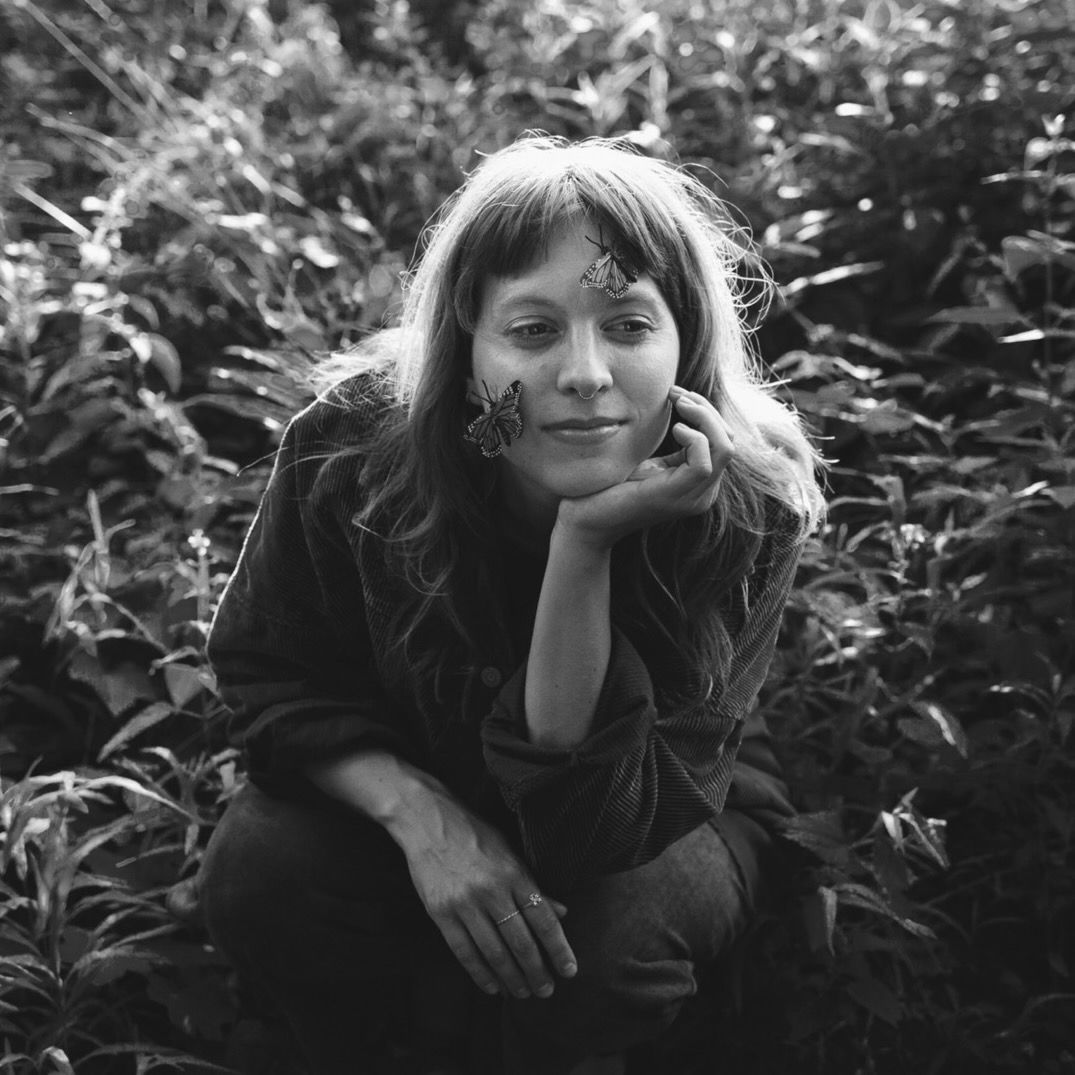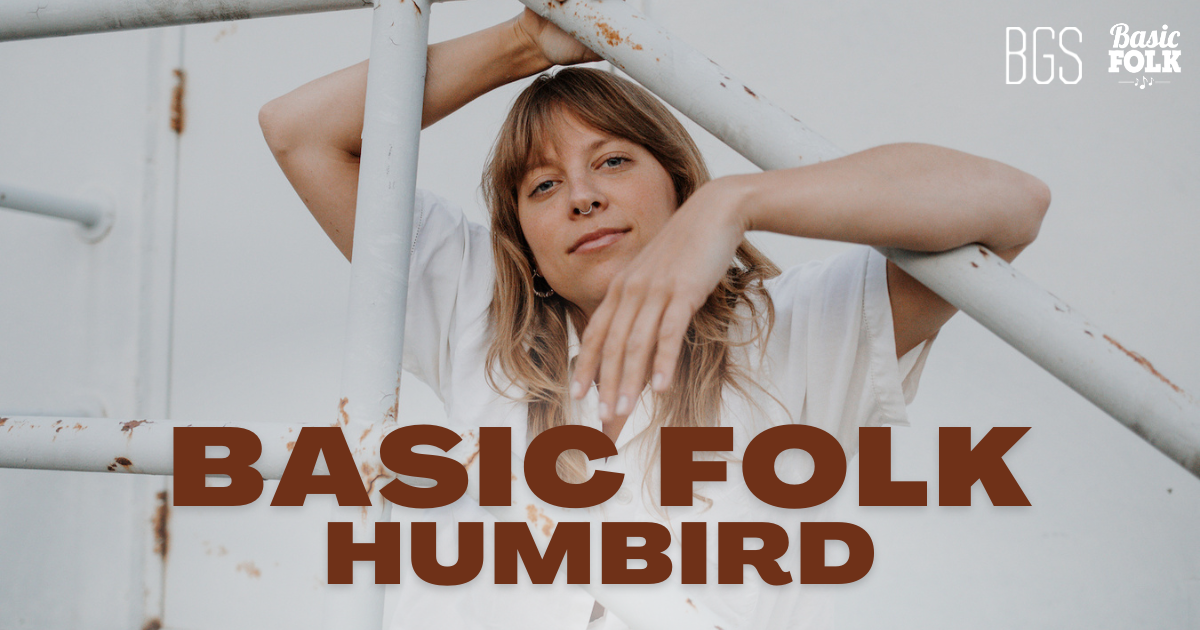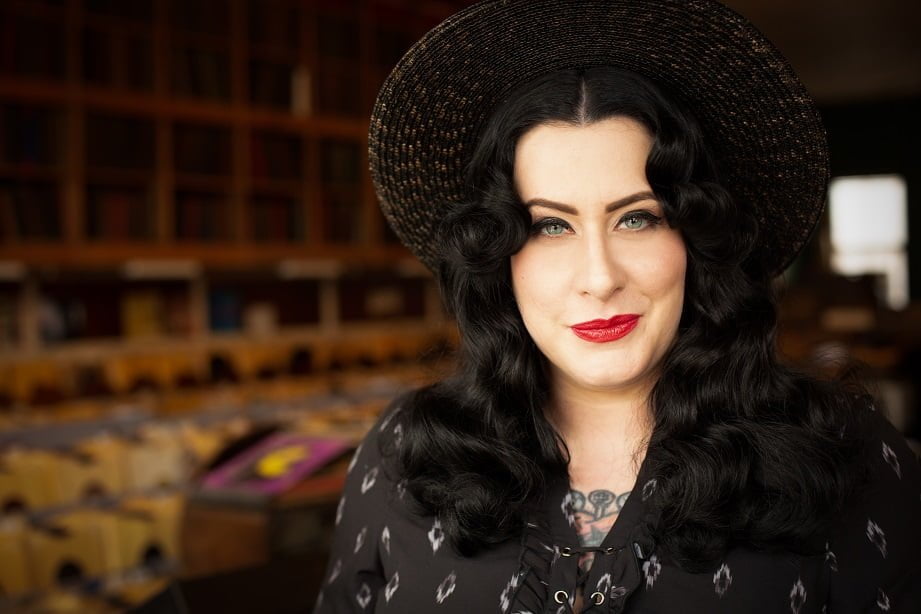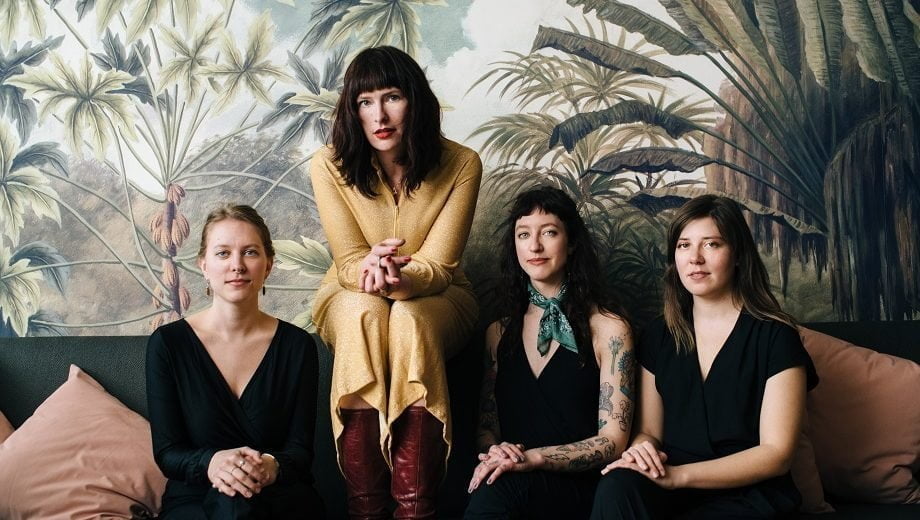What makes a song?
It’s a simple sounding question, one that invites discussion about structure, melody, production techniques and more (and certainly has no real answer). It’s also something Humbird explores on her transcendent new record, Astrovan: The Love Song Vignettes, which follows last year’s critically acclaimed Humbird LP, Right On.
Written before the pandemic, the 11-song project spans just 16 minutes, but is expansive in its vision and emotional depth, as principal Siri Undlin muses on love in its many forms using varied musical styles. The resulting album is especially meditative when enjoyed in one sitting and invites listeners to consider how love is present in their own lives, whether in the beauty of nature or in small, domestic gestures from loved ones.
Below, BGS caught up with Undlin to chat about making Astrovan, finding beauty in mundane moments and how creative restrictions can often lead to happy artistic accidents.
This new project is such a cool idea with these short vignettes. I’d love to hear a little bit about the project’s beginnings and how that idea came to you?
Siri Undlin: It started off very much not an album. I was struggling to write and struggling to feel inspired. A friend of mine was like, “Why don’t you write simple, short songs and not worry about if they’re good or not?” I had recently fallen in love, so I was trying to write some love songs that weren’t super annoying. I was like, “Maybe short is the way.” So, yeah, it was just a goofy project that I sometimes did at live shows, because it’s funny.
People usually get a kick out of it and it’s fun to talk on stage about what a song is, like, “Why do we expect it to be a certain length?” It’s a fun, intimate audience moment. But then, a couple of friends who are really talented producers and engineers were at a show and they were like, “What the heck? You should definitely record these.” Those pals were Brian Joseph and Shane Leonard, so the three of us recorded them. This was all back in 2019, so it was also a while ago.
So, you’ve been sitting on those for a little while. What made it feel like the right time to put them out as a full album?
They were just weird enough that I was not quite sure what to do with them. Back in 2019, we were very much a DIY band. I was booking most of the tours. We were self-managed, putting out albums independently. So, it was just this one-woman shop. I honestly didn’t have time. I don’t want to release music unless I can do a good job and be proud of really putting my whole heart behind releasing it. It took a while, but I feel like, in the last year, it was like, “Oh, you should come out.” They’ve been waiting for a while, and now I have the bandwidth thanks to some folks helping me out behind the scenes. I’m also more confident as an artist. We’ve been a band for longer, and we’ve put out other music. So, I felt like, “Okay, if [fans] are into what we’re doing, they have an idea of this project’s personality and we can throw this strange project at them.”
I love how know each song is a love song, but you’re you’re covering lots of different types of love. It’s not just your standard, romantic love – there’s love for nature and plants and for mundane-seeming gestures like leaving food out for someone who’s coming home late. It’s a very expansive vision of love.
I know that in my personal life, sometimes those [mundane] moments are the most loving. Sometimes in love songs, on a broader scale, we get high drama and high stakes. But I love the little, ordinary moments that, when you put them in a song, feel really magical.
It’s a rewarding experience to sit and listen to the record start-to-finish. It feels very meditative, in a way. What was your time recording like? A few moments ago, you mentioned thinking about what makes a song a “song,” and what a song is allowed to be. How did that play out while you brought these songs to life?
In my memory, it was a pretty quick, moving process. I think we did the initial tracking in maybe four days and then we did some overdubs a handful of other days, maybe half a year later. And because the songs are so short, it was like, “Okay, how can we make these feel fully realized in such a short period of time and still take risks and have various arrangement choices that are engaging?”
It has to happen in such a condensed period. It was a great challenge: take your ideas but make them as compact and meaningful as possible because you only have a few seconds. Now that it’s out in the world, people are like, “I wish this song was just a normal length. It’s so sad when it’s over.” But I felt like we had to stick to the premise. Some of the songs could go way longer, sure, but it’s fun to keep it short and sweet.
What did you take away from that experience? It seems like it would be instructive to have to work with those restrictions and to learn how to cram so much meaning into a minute’s worth of music.
The biggest takeaway was that you can do it. You can have an emotionally resonant song in 45 seconds or one minute if you’re really determined. Going forward with recordings that came after it made me a better listener and a better editor of my own work, because when you have to be so cutthroat during the editing and arranging processes, you’ve flexed that muscle. I think it strengthens the writing and arrangements going forward because it was sort of a, “Do we absolutely need this or not?” question. That’s how I prefer to move through music recording: throw it all at the wall and then pare it back and have something you’re really proud of.
I’m surprised to hear that these songs were written so long ago, as I had noticed some musical and thematic connection points between Astrovan and Right On and assumed that Right On played an influential role. Do you feel a connection there, too?
I think you’re hearing it just right. But the truth is that Astrovan led to Right On. Astrovan has some folky, almost country music moments. But then there are also some rockers. Those are, to be honest, some of the first times in the studio where I was like, “Dang, rock and roll is fun to play.” It’s so fun to turn up the amp and use a distortion pedal and just have fun. It’s really cathartic, and those songs were only a minute. So then, when I picked up the guitar again later on to write songs for Right On, I think in the back of my mind I was like, “I want to do more of that fun, loud, more abrasive stuff.” And that definitely informed choices for Right On.
Speaking of Right On, that’s been such a big record for you. And now that we’ve hit 2025, it’s been out for the better part of a year. When you reflect on the year you had in 2024, what comes to mind?
One really cool thing that I didn’t anticipate was a level of confidence that me and my bandmates were able to sink into with the Right On album. We put our whole hearts into making it. It was so fun to record and it’s so fun to play live. As a result of performing it all year, we’ve just gotten better at performing. I think we all really stand behind what we do on stage and in a music ecosystem that’s so confusing and hard to know. But when you can get on stage with people you love and play music that you’re proud of and you’re excited to share with people, that is the best feeling ever.
I feel like that was what a lot of our year was about. We love playing this music. We’re stoked to share it with you. And we’re not getting too caught up in all of the other elements that swirl around with making music your livelihood. Not that those factors aren’t there, but ultimately, the year was about this record that we were proud of. So, that feels great.
You have some festival dates on the books for this year. Do you have any plans to tour, too?
We’re a band that definitely hits the road, historically, and that’s the plan for 2025, as well. We were all upper Midwest kids, so we also hibernate hard. But when the snow thaws, we’ll be out there, and I think it’ll be pretty consistent throughout the year. That’s where we’re at right now as a band and we’re soaking it up because it’s a good chapter to be in.
Photo Credit: Juliet Farmer



